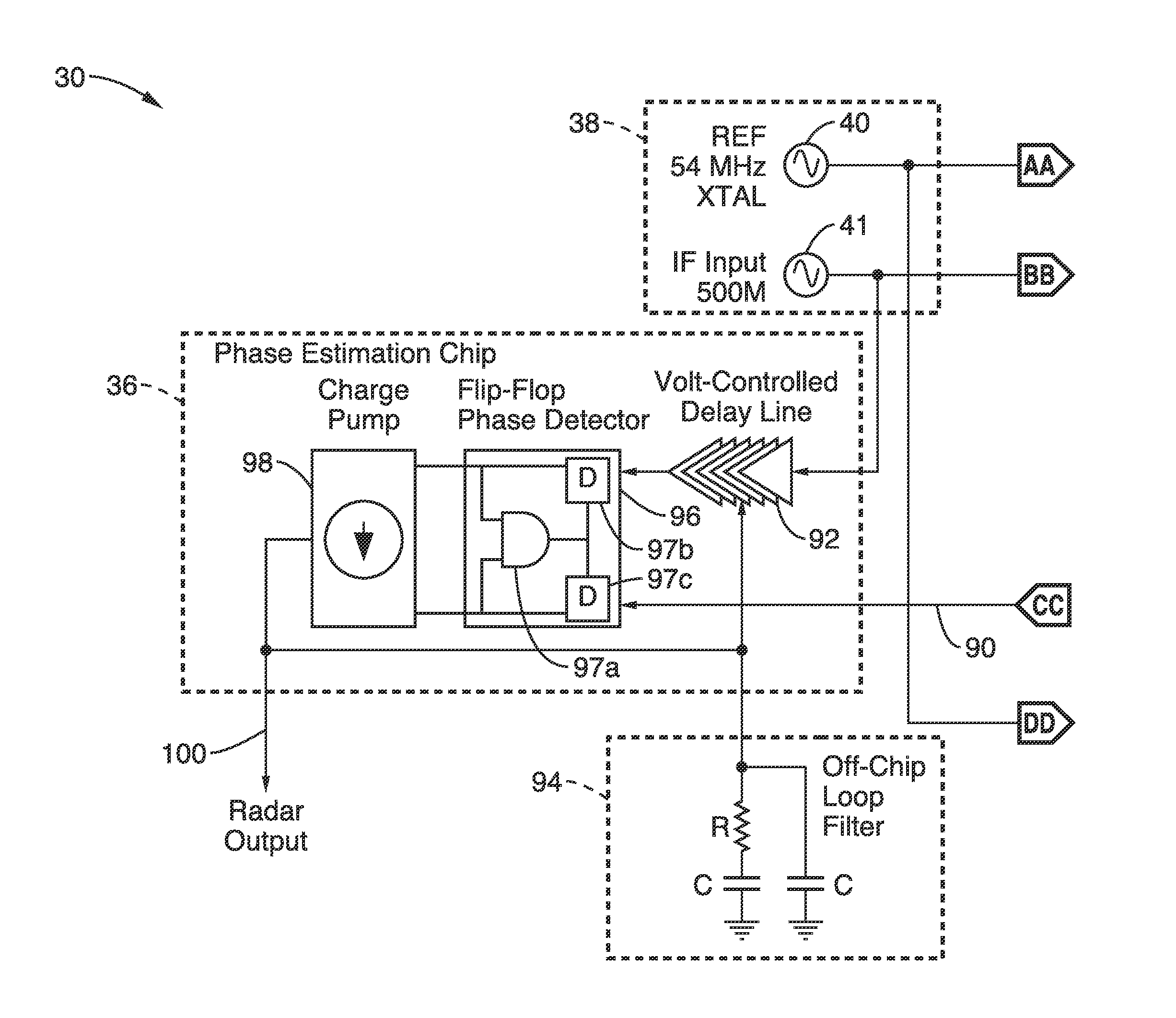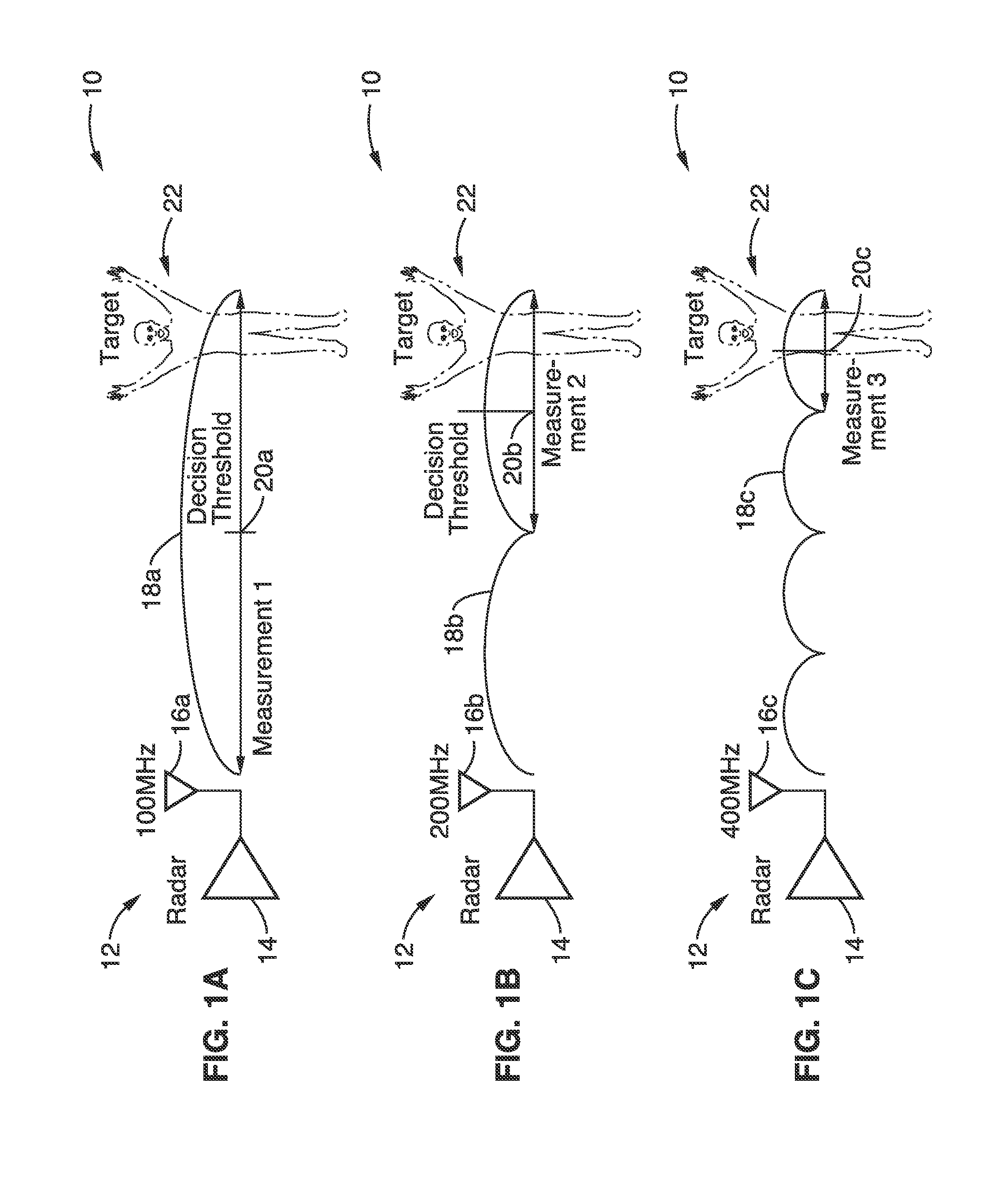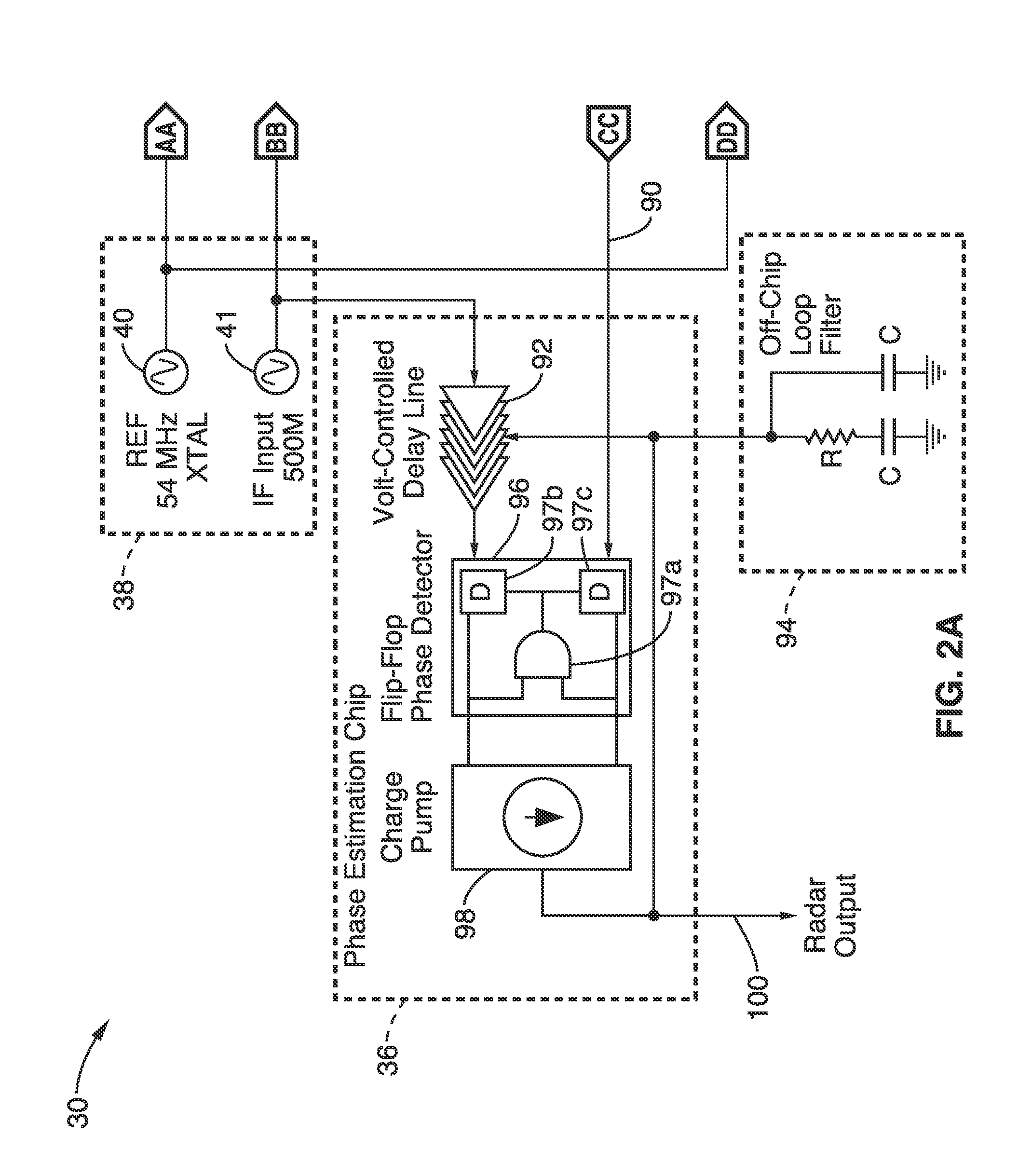Sub-carrier successive approximation millimeter wave radar for high-accuracy 3D imaging
a 3d imaging and subcarrier technology, applied in the field of radar systems, can solve the problems of limited accuracy, limited use of phase-based radar, intrinsic range ambiguity, etc., and achieve the highest achievable accuracy in radar systems, simplify manufacturing, and improve accuracy. the effect of 1 cm
- Summary
- Abstract
- Description
- Claims
- Application Information
AI Technical Summary
Benefits of technology
Problems solved by technology
Method used
Image
Examples
Embodiment Construction
[0031]FIG. 1A through FIG. 1C show an embodiment 10 exemplifying the basic detection principle of the successive approximation sub-carrier radar. A radar system 12 is shown with transmitter and receiver (Tx / Rx) 14 and multiple intermediate (sub-carrier) frequencies, for example 100 MHz 16a in FIG. 1A, 200 MHz 16b in FIG. 1B, and 400 MHz 16c in FIG. 1C. A first measurement is seen with IF at 100 MHz with waveform 18a shown directed at target object (individual) 22. It can be seen in FIG. 1A that based on the decision threshold 20a, seen at mid-waveform, the target is more than a half wavelength away. The IF is increased (e.g., doubled) with waveform 18b, as seen in FIG. 1B, wherein the target is seen in the last half of the second waveform, based on the decision threshold 20b. IF is increased again in FIG. 1C with waveform 18c, with the target showing up near the center of the fourth waveform, with decision threshold 20c. A decision threshold is seen with each waveform, wherein depen...
PUM
 Login to View More
Login to View More Abstract
Description
Claims
Application Information
 Login to View More
Login to View More - R&D
- Intellectual Property
- Life Sciences
- Materials
- Tech Scout
- Unparalleled Data Quality
- Higher Quality Content
- 60% Fewer Hallucinations
Browse by: Latest US Patents, China's latest patents, Technical Efficacy Thesaurus, Application Domain, Technology Topic, Popular Technical Reports.
© 2025 PatSnap. All rights reserved.Legal|Privacy policy|Modern Slavery Act Transparency Statement|Sitemap|About US| Contact US: help@patsnap.com



